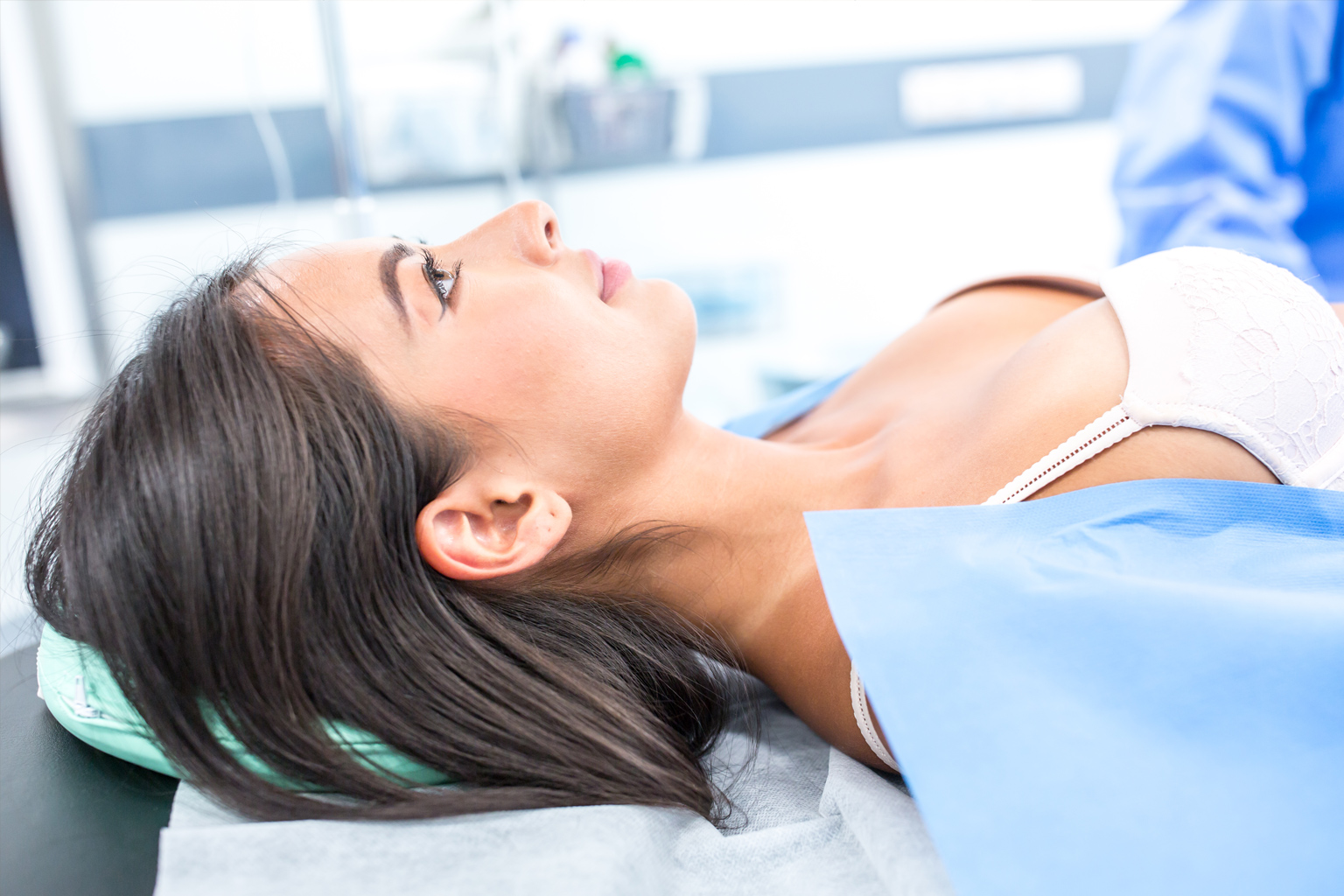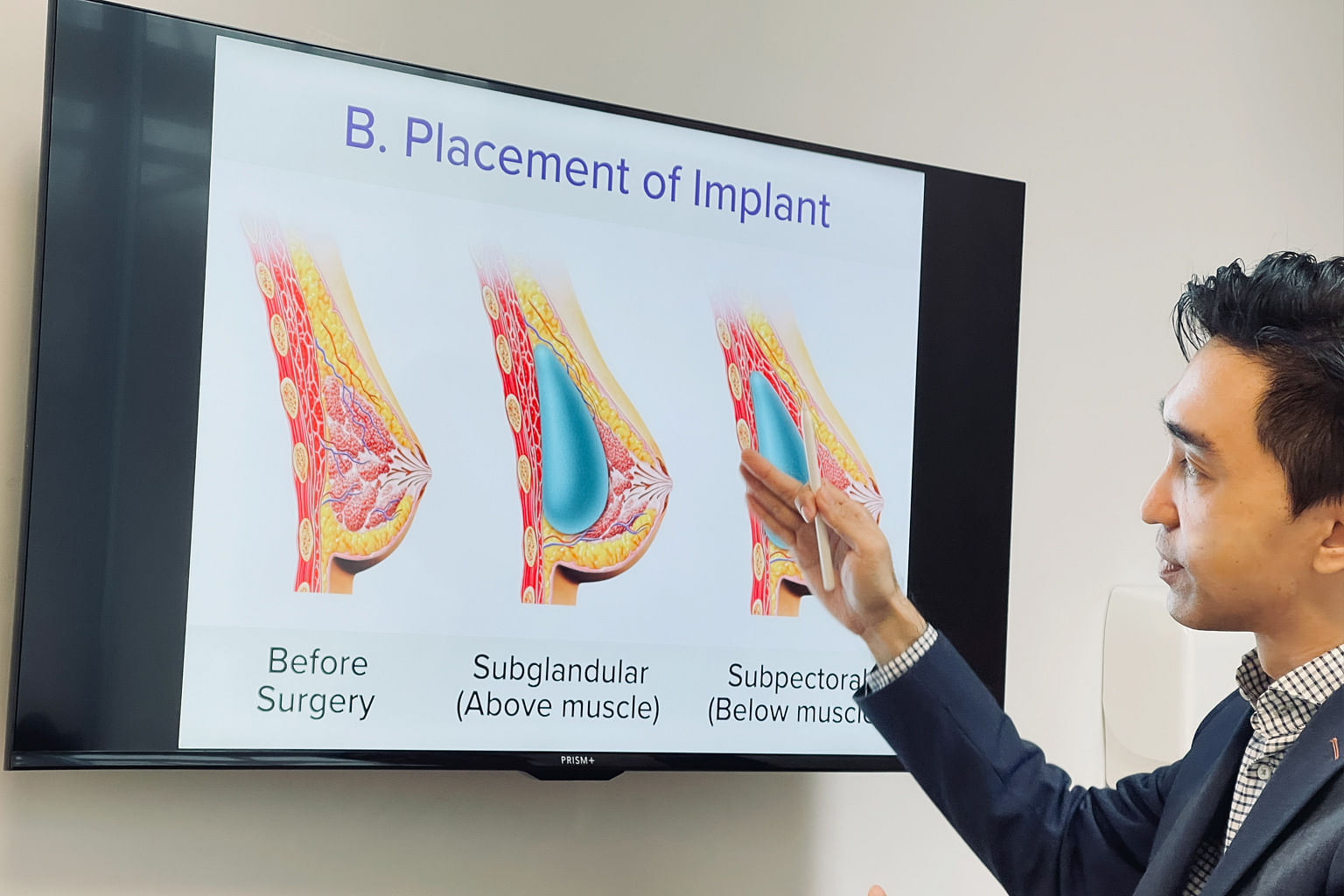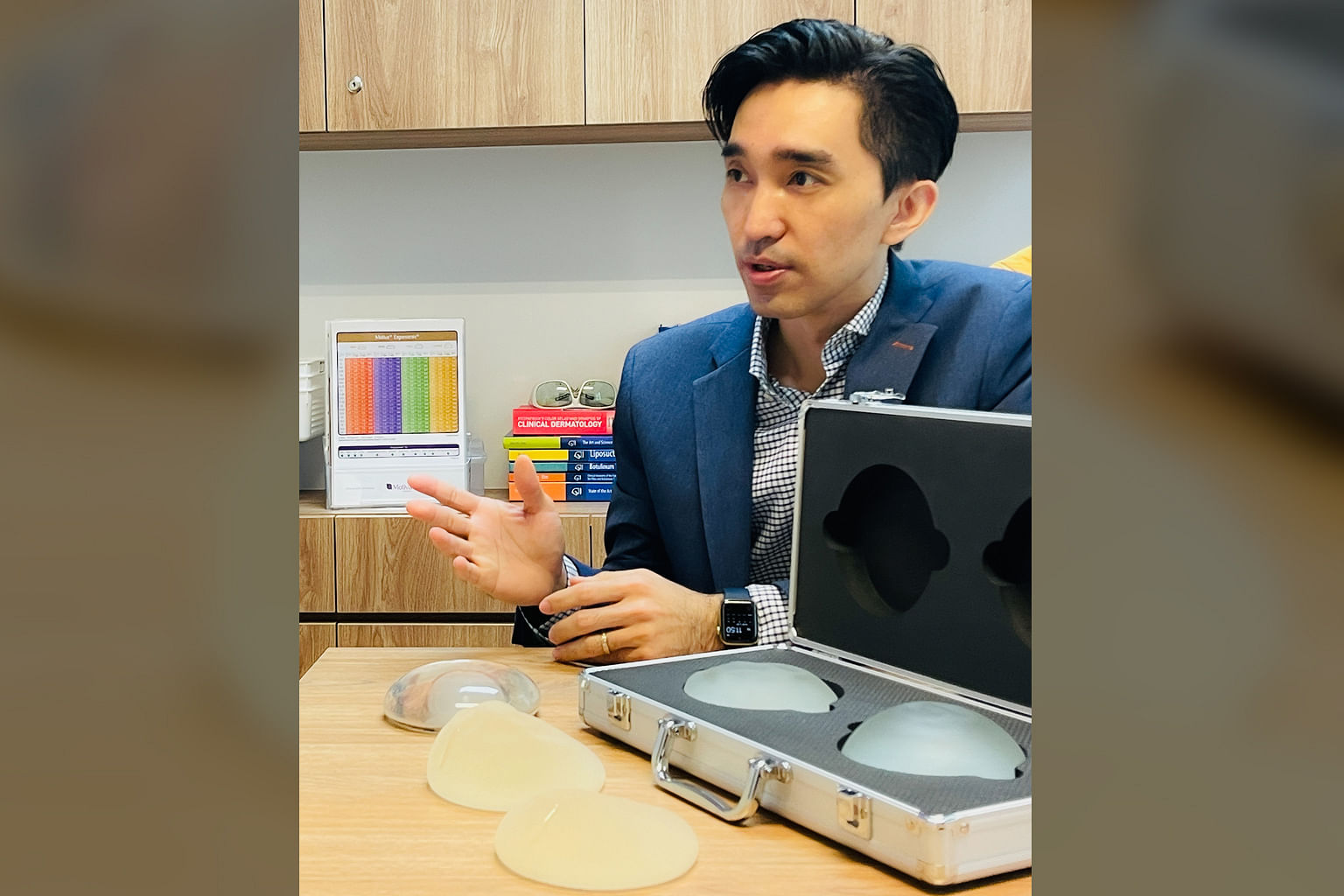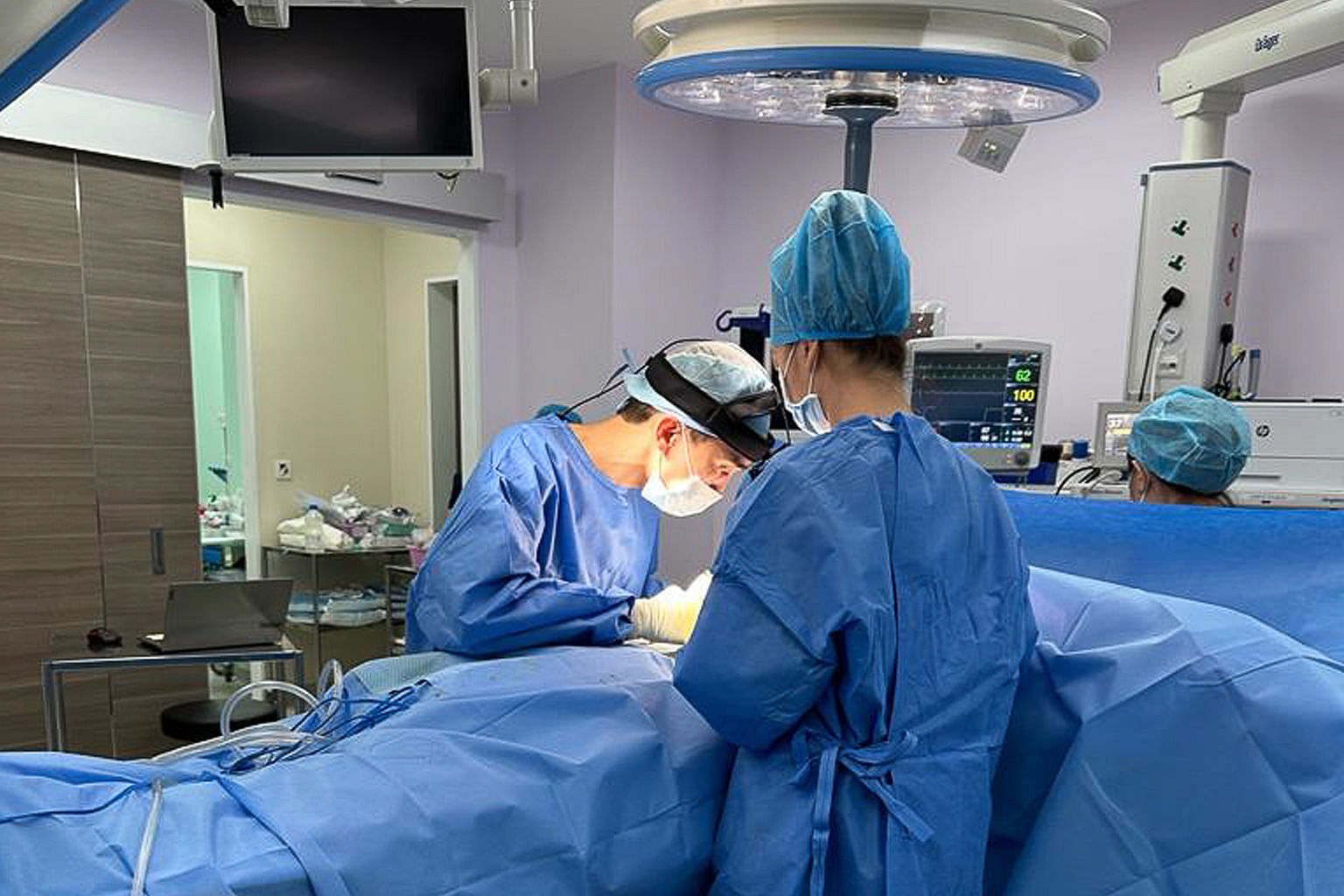BRANDED CONTENT
Implants, fat grafting and recovery: What to know before getting a boob job
From using your own body fat and choosing right-sized implants, to post-surgery downtime, plastic surgeon Vincent Tay answers common questions on breast augmentation

Common misconceptions about boob jobs include the fear that the procedure may result in unnatural-looking breasts. PHOTO: GETTY IMAGES
Follow topic:
Breast augmentation, also known as a boob job, is one of the most common cosmetic surgeries for women in the world.
According to a 2021 report by the International Society of Aesthetic Plastic Surgery, breast augmentation is the second-most popular surgical procedure worldwide. Liposuction is first and eyelid surgery is third.
In Singapore, Dr Vincent Tay, a board-certified plastic surgeon at Artisan Aesthetics & Plastic Surgery, says breast augmentation makes up about 40 per cent of his practice.
He sees an average of eight to 10 patients a week. Younger patients usually seek an increase in volume and to correct asymmetric breasts, while women between the ages of 30 and 40 seek to rectify the effects of weight loss, pregnancy or breastfeeding.
“For patients beyond their 50s, it is commonly a request for a breast lift or revision of their older-generation implants,” says Dr Tay.
Though it is a popular procedure, there are still misconceptions about boob jobs, as many fear the procedure can result in unnatural-looking breasts. Dr Tay says this is untrue as long as the procedure is done by an experienced surgeon.
“It should not look unnatural if there is no resulting complication from the surgery such as misshapen or painful implants, or malpositioning of the implant,” he adds.

The misconception held by each patient is different, says Dr Tay.
“It really depends on what they have been reading or who they have spoken with. The Internet is a rich source of information, but sometimes, it can be misleading or confusing for the lay person. It is better to verify it with a doctor if you are considering surgery,” adds Dr Tay.
If you’re thinking of undergoing a breast augmentation, here are some valuable insights from Dr Tay so that you can make an informed decision.
Procedure can be done with incisions as small as 2.5cm
Breast implants are usually made of silicone or saline. In Singapore, only silicone is approved for use. Compared with saline, Dr Tay says silicone implants look and feel more natural as they mimic the consistency of breast tissue.
Breast implants come in a wide range of shapes, sizes and textures. They sit behind your chest muscles, also known as a subpectoral placement, or behind your breast tissue, which is known as a subglandular placement.

At Artisan Plastic Surgery, all types of implants approved for use in Singapore are available, including Motiva silicone implants which have shown very low complication and rupture rates of less than 1 per cent after two years post-surgery.
Dr Tay says he can perform the surgery with an incision as small as 2.5cm.
“Motiva greatly mimics the consistency of breast tissue and we are seeing even more natural looking results,” adds Dr Tay.
Motiva implants are offered only by selected surgeons who have the relevant experience and are certified to use these newer implants.
Breast implants usually last at least between 15 and 20 years based on the manufacturer’s recommendation. There are, however, many patients who keep their implants beyond that period without any issues.
As they are considered medical devices, the implants need to be monitored regularly, adds Dr Tay.
Implants aren’t the only solution
Women who want a more modest increase in breast size can opt for fat transfer or grafting instead of implants.
The procedure involves taking fats from other parts of your body such as the tummy, hips and thighs, and injecting them into your breast.
However, only a certain amount of fat can be grafted each time as fat cannot survive without a blood supply. Dr Tay says it is preferable not to graft the fat into the breast glands as there may be an inherent risk of scarring, cyst formation, or a risk of infection. Because of this, patients may need one to three sessions of fat grafting to achieve their desired results.
Dr Tay notes that he is able to achieve high fat graft survival by combining his experience in fat stem cell research with the German-developed BEAULI technique. This procedure uses a waterjet system to gently harvest fat cells from the patient and process them in a closed system to preserve the cells’ viability. The fat cells are then injected into the patient’s breasts.
There is also hybrid breast augmentation, a combination of implants and fat grafting.
“By combining a modest-sized implant with fat grafting, you can achieve a more desirable contour and minimise the risk of feeling the implants, or producing a rippling effect under the skin,” says Dr Tay.
Smaller implants are used to better match the shape of the breast and avoid long-term issues such as sagging or malpositioning that may occur with larger implants.
Fat transfer is then used to top up the volume, improve the contour of the augmented breast, and thicken the soft tissue coverage of the implant.
This method is suitable for those who desire larger breasts but want to avoid potential issues with large implants, or prefer having implants above their chest muscles but have thin skin.
And despite the misconception, breast implants and fat grafting are not known to significantly affect a woman’s ability to breastfeed, says Dr Tay. However, if there are concerns, the surgeon can avoid a very large implant to minimise compression on breast tissue and avoid incision around the areola to fully preserve nipple sensation.
“It is up to you and your surgeon to decide which type of implant is suitable based on your anatomy and your desired results,” says Dr Tay.

Not just for aesthetic reasons
While the procedure is primarily done to enhance the shape and size of your breasts, breast implants and fat grafting can also be done for medical reasons, such as reconstruction after breast cancer surgery.
It is an alternative to autologous reconstruction, which uses your own tissue and is deemed by some patients to be more invasive or risky, notes Dr Tay.
“After breast augmentation, patients can continue routine breast cancer screening using a mammogram, ultrasound, or even magnetic resonance imaging (MRI),” adds Dr Tay.
Breast augmentation can also be done to correct Poland syndrome – when you are born with absent, small or misshapen breasts – or congenital deformity such as tuberous breasts which are usually misshapen.
“These surgical procedures can transform psychosocial health for the patient and help to restore femininity for the affected person – similar to repairing a cleft lip or congenital facial asymmetry,” says Dr Tay.
Varying lengths of post-surgery downtime
Breast augmentation is performed as a day surgery under general anaesthesia. You can expect some bruising, swelling and aches after the procedure, says Dr Tay.
“Implant surgery may require a longer downtime than fat grafting, especially if the implant is done below the chest muscle,” explains Dr Tay. “Patients usually take three days off work and can return to non-strenuous exercises in two weeks, such as brisk walking. Complete healing takes around six to eight weeks.”
Patients are also required to wear a bra with good support for about three months to allow the implants to settle in place.
Some may experience an occasional tingling sensation or pulling pain in the first three months as the body heals and gets used to the implant.
For fat grafting, post-surgery care takes up to two weeks for the breasts, and between four and six weeks for the harvest sites, which is where the fat was removed from. There may be some swelling and bruising from the liposuction, but they generally subside by the third week, says Dr Tay.
Patients are advised to go bra-less and keep themselves warm and hydrated for two weeks to maximise the chances of fat survival. Fasting or losing weight in the first two months are also discouraged as this could affect fat survival.
The cost of primary breast augmentation can range between $14,000 and $18,000 in Singapore, depending on the type of surgery and implant used.
While breast augmentation is a relatively safe procedure, there may still be complications, although chances are low.
Potential issues include problems early on such as wound healing, hematoma, infection and adverse scarring.
At a later stage, problems with implants may also surface, such as capsular contracture, the hardening and contraction of scar tissue around the implant. There is also the risk of malpositioning, when the implants move out of their intended position, and implant rupture.
“With the use of newer generation implants, like the nanotextured implants from Motiva, we are seeing a lower risk of such complications,” adds Dr Tay.
Dr Tay says these risks can be minimised if the procedure is done by an experienced surgeon, and even if they do occur, the problems can be identified and rectified in a timely fashion.
“Speak to a board-certified plastic surgeon with experience in breast augmentation to understand if it is suitable for you,” he adds.


